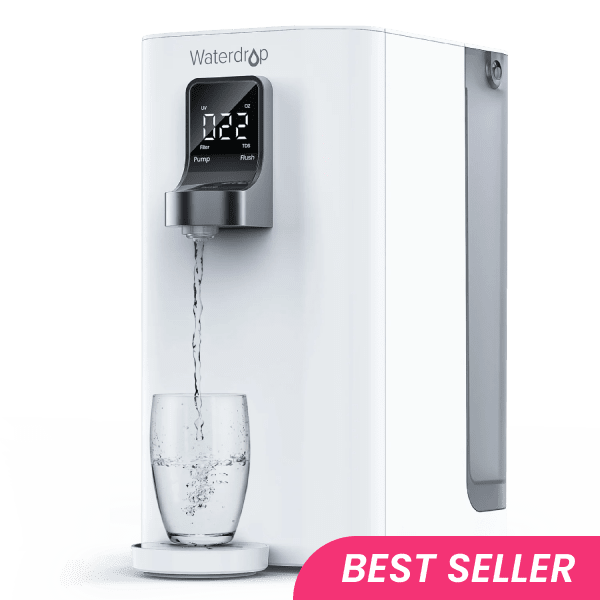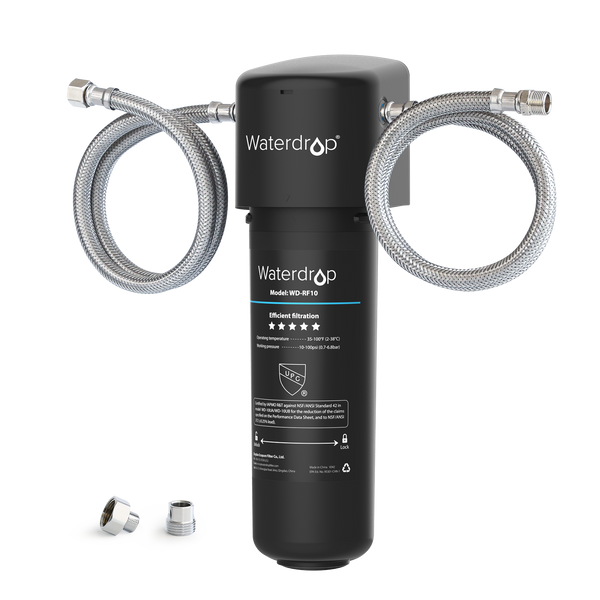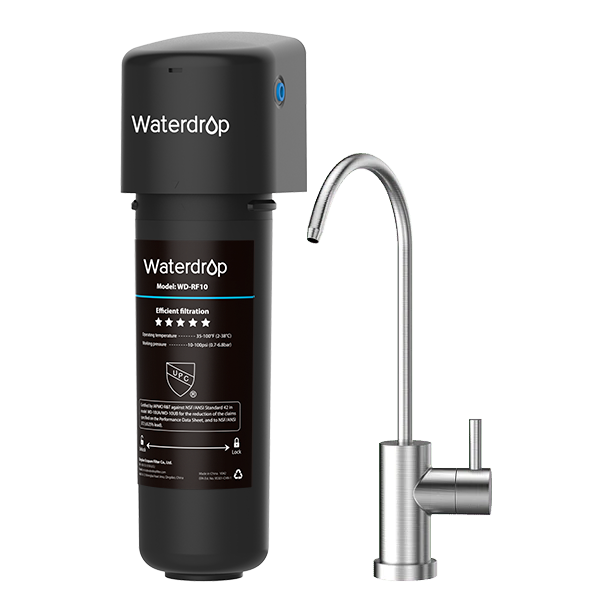Improving Drinking Water Through Ultraviolet Disinfection
by Dr. Jonathan Doyle - Updated September 15, 2021
The majority of diseases and cancers, as well as a third of all deaths, are
attributed to poor water conditions, according to the World Health Organization (WHO). These diseases include skin diseases,
infectious diseases, digestive diseases, cardiovascular issues, and cancer, just to name a few. When humans
consume raw water, they are drinking in a load of heavy waters, sediment, various impurities, organic
pollutants, and harmful substances – all of which can be detrimental to overall health.
In our current day and age, people look for the shortest way to solve the world’s
problems – including the water crisis. With the introduction of water purification, the issues surrounding the
consumption of drinking raw water has nearly been solved. What method brought about this significant change, and
how can it be utilized around the world? The introduction of UV light for disinfecting water is an affordable
way to provide cleaner drinking water, without the need for extensive equipment.
UV Water Purification Systems
For situations where live microorganisms run rampant throughout water systems, an
Ultraviolet, or UV, water purification system utilizes light to remove pollutants. This means microorganisms
such as Giardia, Escherichia coli, Salmonella, Cryptosporidium, and other viruses may be eliminated from
untreated water with ease. The process of UV treatment does not require any chemical, or physical aspects in
order to purify water, using electromagnetic radiation, instead.
Mercury vapor lamps and sterilization lamps both produce ultraviolet rays while
they’re in use. A transparent surface, such as the glass component on a variety of lamps, enables the shortwave
UV rays. Eventually, these shortwaves eliminate any live microorganisms and bacteria it comes into contact with.
While UV rays are an effective form of disinfection, it is incapable of removing solids, and other compounds.
That means that, while the method of treating water with UV rays is quick, it cannot provide the same filtration
aspects other types of purification encompass.
How UV Water Filters Work
Because this type of sterilization does not involve any chemical or physical agents
to do its work, you may wonder how UV rays work. While the UV light is not visible to the human eye, but is
rather a light wave illuminated by UV rays. This enables the light to destroy the structural integrity of
bacteria’s RNA and DNA. Through rapid sterilization, bacteria lose their capacity to reproduce, or are killed
off immediately. In short, Ultraviolet light sterilizes water without causing secondary pollution to the water,
nor does it change any components held therein.
More traditional forms of disinfection technology tends to be flammable, and highly
toxic. In and of itself, the method of UV disinfection does not present safety hazards like ozone, or chloride.
Irradiation from a germicidal lamp sterilizes water, without presenting a heavy demand for energy or time. In
fact, UV light requires very little electricity, which makes it easy to use in a variety of locations – putting
many individuals at ease.
Should You Utilize a UV Purifier?
Because the process of UV water treatment does not require chemicals of any sort to purify water, and
does not change the water’s inherent composition, it provides a safe alternative for humans. A UV-C light is
used in a UV sterilizer to disinfect drinking water. Although a UV-C light can be harmful to humans, it poses no
harm to people when used appropriately. This means you should avoid looking directly at the bulb while it is in
use, as well as avoid touching it. If you follow those simple guidelines, you are not in danger of any type of
exposure. This is much different compared to other forms of water treatment – often used by municipal water
treatment facilities.
Chlorine is the most common form of water treatment, remaining in the water long
after it has left the treatment facility. By comparison, the process of purification by UV light is much safer
to the environment, as well as people and animals. Though chlorine does disinfect water, UV lights are capable
of eliminating protozoa chlorine cannot touch. UV systems are easy to maintain, and safer to use than harmful
chemicals. It’s for these reasons that we are currently observing a trend in water treatment facilities making a
move over the UV systems, rather than chlorine-based methods. By making a change, we can create a lower amount
of chemical by-products.
There are many advantages set forth by a UV water purifier, even for residential
settings. They are effective, free from harsh chemicals, conserve water, impart no unpleasant tastes or smells,
and are quite economical. You can rest assured that a UV water purification system will remove virtually any
microorganisms originally present in your tap water, without the stress of adding chemicals. These units require
very minimal space, and offer trouble-free solutions to water treatment. By adding a UV water purification to
your home, you can provide your family with clean, safe drinking water, with very little maintenance.

Using a UV Water Purifier at Home
If you are looking to add a UV water purifier to your place of residence, opt for a
system that is so effective on impurities, they have zero chance of survival. The Waterdrop N1 Countertop RO
Water Filter System pairs the best of both worlds into one convenient unit. Your family can benefit from the
process of RO, now with the further improvements of UV light. Waterdrop’s
RO system kills bacteria and viruses each and every hour, in a countertop style that won’t demand all of
your space. By combining the power of a RO
membrane, with a carbon block, and PP cotton, the UV light is the final step in ensuring you don’t face
illness and disease due to poor water conditions.
Final Thoughts
Severe weather conditions are a constant reminder of the threats facing our day to
day lives. While it may be one of your last considerations, water is an essential aspect to your very survival.
When pollutants are enabled to enter our water systems, the end result is the consumption of unsafe water. If
you are searching for a long-term solution to your tap water, a UV water purification system is a no-brainer.
Take control of your life, by enacting pollution control of your own, and provide your family with the highest
level of water quality available.
Contaminants Detected in Fruitland Water Special Service District
30
Contaminants
EXCEED EWG HEALTH GUIDELINES
EXCEED EWG HEALTH GUIDELINES
30 Total Contaminants in Your Water
Water Provider
Fruitland Water Special Service DistrictPopulation Affected
120,000Water Source
Ground waterExceeds Guidelines
Others Detected















